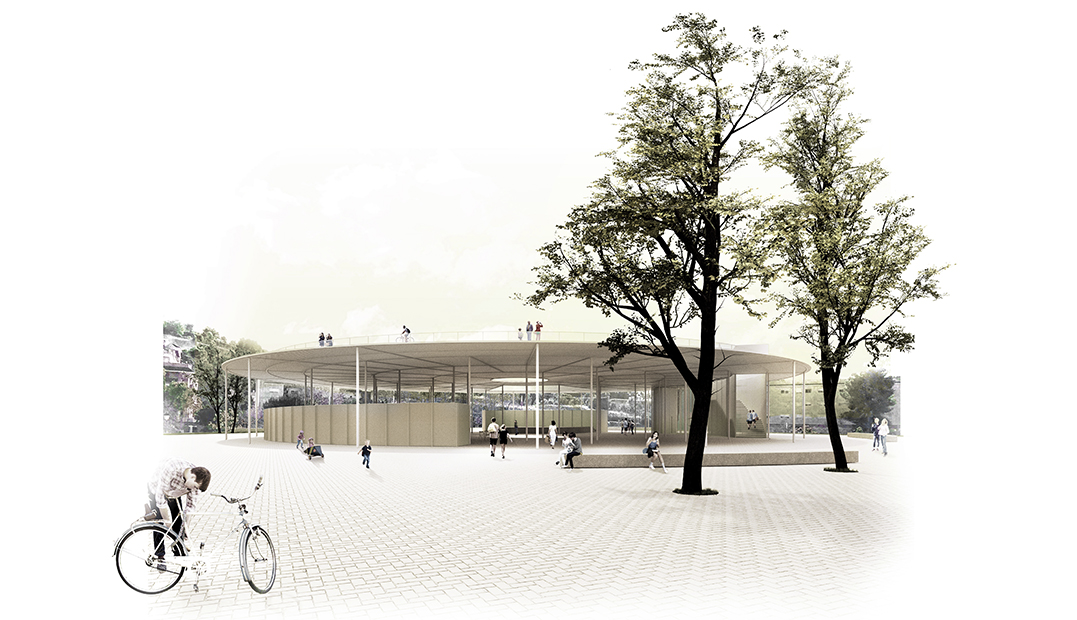
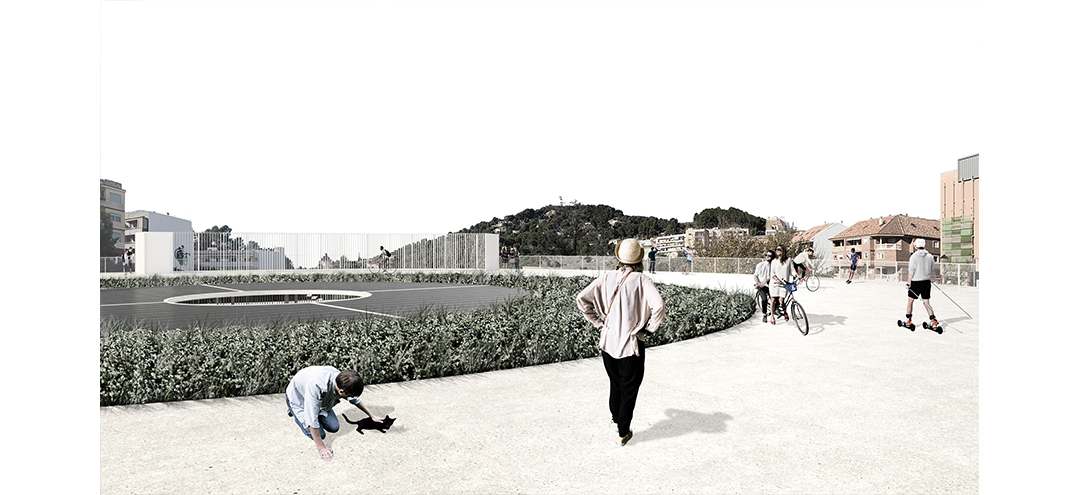
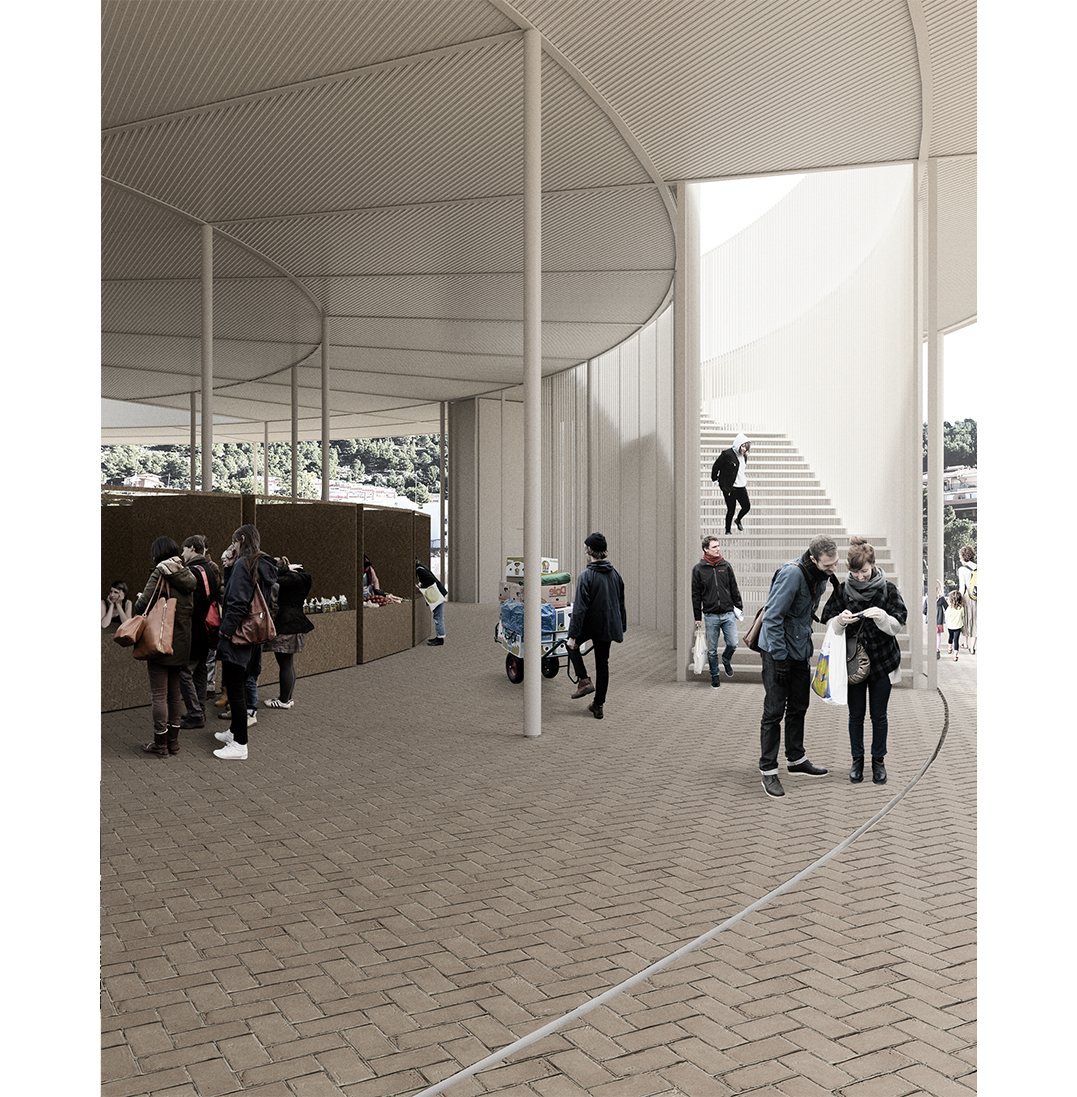
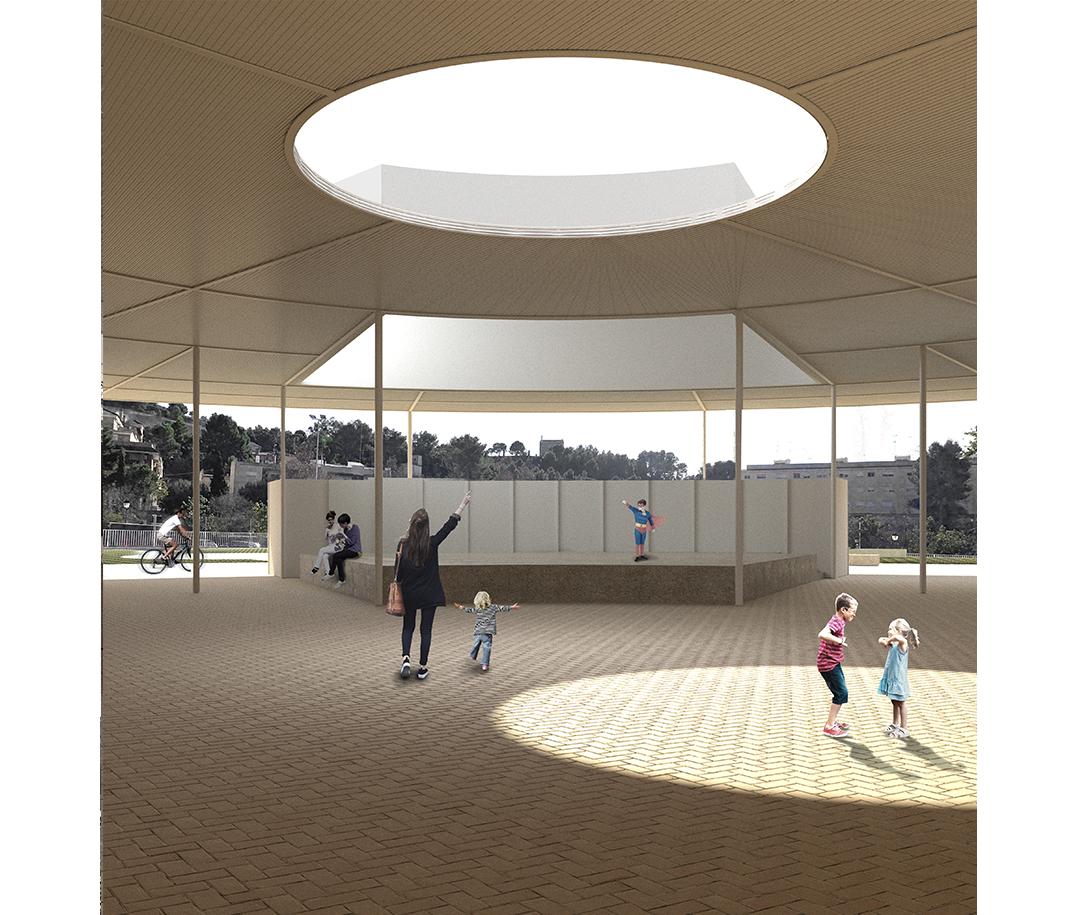
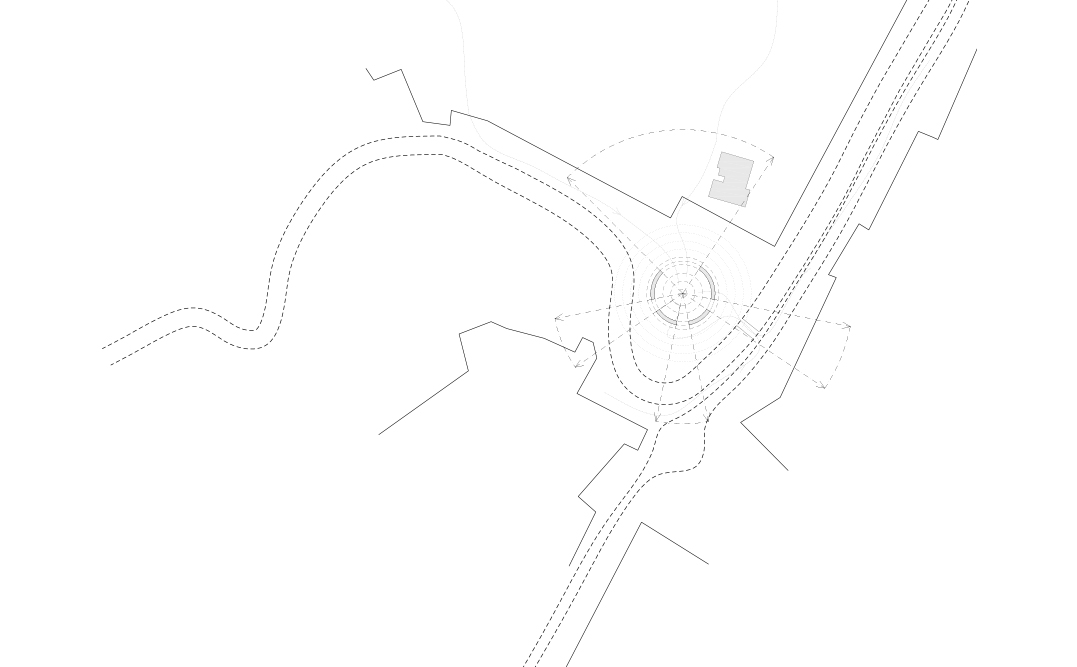
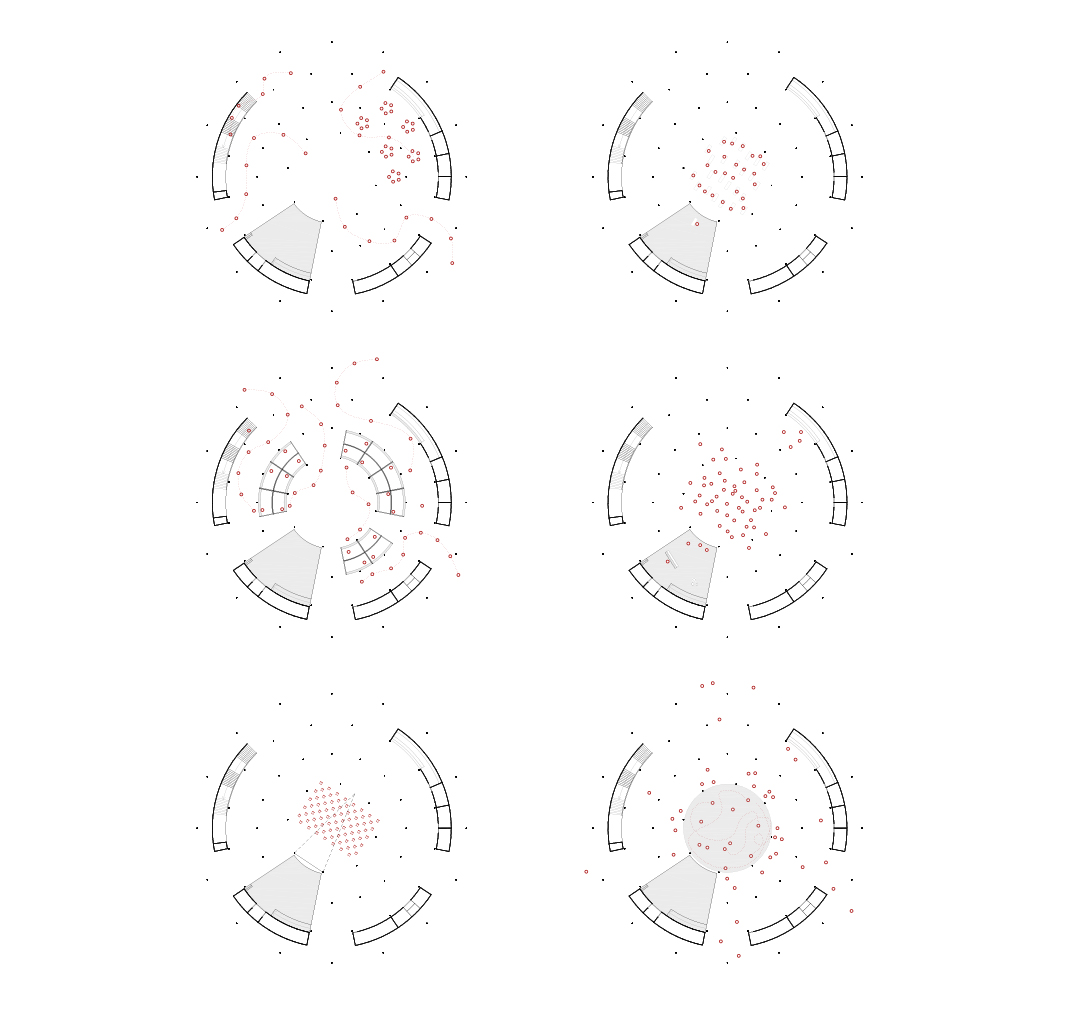


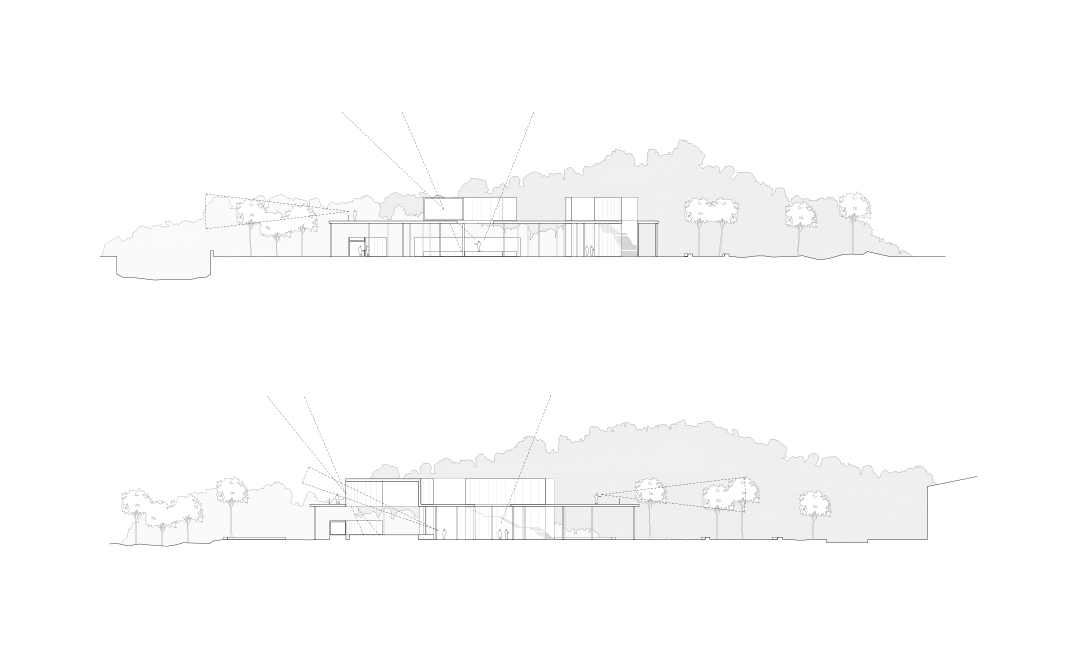
Espacio multiusos Plaza Jaime I
FASE . PHASE
Concurso, 2020
_
LOCALIZACIÓN . LOCATION
Náquera, Valencia
_
SUPERFICIE . AREA
3.600 m2
_
EQUIPO . TEAM
Nacho Juan, Clara Cantó, Jose Iborra, Ana Riera, Belén Iglesias, María Mateo, Bárbara Bruschi
El proyecto nace de la oportunidad de generar espacio público de calidad en un entorno privilegiado que, actualmente, carece de orden y uso específico.
La parcela objeto de trabajo se encuentra en un enclave estratégico, en el centro del núcleo urbano, articulando sus dos partes principales, tangente a la principal vía de comunicación interurbana (CV-310) y colindante también con el barranco que le confiere su geometría y topografía, y con una relación de proximidad con el Ayuntamiento que le da una importancia mayor, si cabe.
Se trata de un lugar capaz de conectar y convocar a todos los habitantes del municipio, un lugar representativo que será observado tanto por cualquier ciudadano en su día a día como por cualquier visitante que se adentre en el municipio. Es, por tanto, una oportunidad de generar ciudad a través de la arquitectura, de generar un lugar que se pueda convertir en referencia de disfrute, esparcimiento y celebración.
Con todas estas premisas el proyecto plantea una estrategia de implantación y un sistema de desarrollo basado en los siguientes principios:
1. 360º
La geometría y la topografía de la parcela invitan a pensar en un trazado único, amable con la naturaleza, que permita al edificio ser visto desde cualquier lugar y también poder disfrutar desde él hacia cualquier punto. Debe ser un elemento capaz de integrarse, ser reconocido y también capaz de reconocer el valor de todo lo que lo rodea, fomentando el disfrute de su entorno natural.
2. La cubierta como hito.
La propuesta trata de construir lo estrictamente necesario para la función requerida, tratando de optimizar los recursos a utilizar. La cubierta, por su propia geometría y proporción adquiere la representatividad requerida como elemento de reclamo y como elemento de reunión. .
3. La cubierta como plaza mirador.
Si la cubierta genera, en su parte inferior, un espacio en sombra y protegido, en su parte superior ofrece la oportunidad de descubrir un espacio abierto al cielo de nuevo, donde poder observar y descubrir el paisaje.
4. La cubierta como captador sostenible.
Su extensa superficie y su exposición al clima, convierten a la cubierta en un perfecto captador y generador de aprovechamiento de los recursos naturales existentes, tales como la energía solar y el agua de lluvia.
5. La estructura como elemento del lugar.
La cubierta se sustenta en esbeltos soportes estratégicamente distribuidos que simulan una abstracción de los troncos de los árboles que nos encontramos cuando caminamos por el entorno natural de la Sierra Calderona.
6. El anillo de usos.
En la cota 0, un anillo intermitentemente ocupado ofrece un sistema de crecimiento libre donde se ocupan los usos de programa de mandado. Este sistema permitiría, si fuera necesario en un futuro, ampliar su superficie y recorrido para albergar nuevos usos.
The project was born from the opportunity to generate quality public space in a privileged environment that currently lacks order and specific use.
The plot is located in a strategic place, in the city center, articulating its two main parts, tangent to the main interurban communication route (CV-310) and also adjacent to the ravine that gives it its geometry and topography, and with a close relationship with the Town Hall.
It is a place capable of connecting and convening all the inhabitants of the town, that will be observed both by any citizen and by any visitor who come into the town It is, therefore, an opportunity to generate city through architecture, to generate a place that can become a reference for enjoyment, recreation and celebration.
With all these premises, the project proposes an implementation strategy and a development system based on the following principles:
1. 360º
The geometry and topography of the plot invite us to think of a unique layout that allows the building to be seen from anywhere and also to be able to enjoy it from any point. It must be an element capable of integrating, being recognized and also capable of recognizing the value of everything that surrounds it, promoting the enjoyment of its natural environment.
2. The roof as a landmark.
The proposal tries to build what is strictly necessary for the required function, trying to optimize the resources to be used. The roof, due to its own geometry and proportion, acquires the required representativeness as a claiming element and as a meeting element.
3. The roof as a viewing platform.
If the roof generates, in its lower part, a shaded and protected space, in its upper part it offers the opportunity to discover a space open to the sky again, where you can observe and discover the landscape.
4. The roof as a sustainable collector.
Its extensive surface area and its exposure to the climate make the roof a perfect collector and generator to take advantage of existing natural resources, such as solar energy and rainwater.
5. The structure as an element of the place.
The roof is supported by strategically distributed slender supports that simulate an abstraction of the trunks of the trees that we find when we walk through the natural environment of the Sierra Calderona.
6. The ring of uses.
At the ground floor an intermittently occupied ring provides a free-growing system where command program uses are occupied. This system would allow, if necessary in the future, to expand its surface and route to accommodate new uses.
